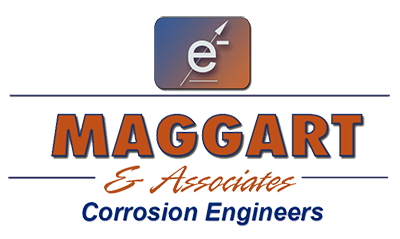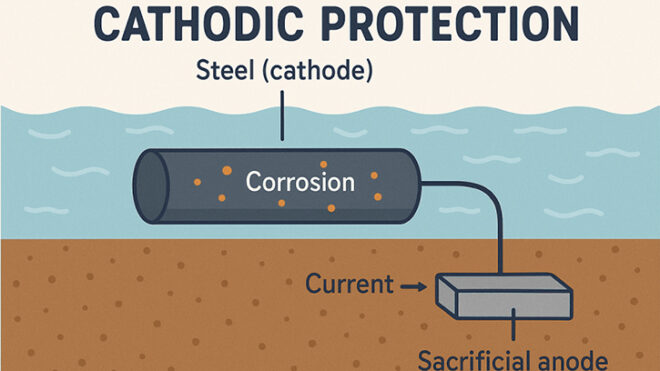Cathodic protection (CP) is a technique to prevent the corrosion of a metal surface by converting it into a cathode of an electrochemical cell. This is achieved by introducing a direct electric current that forces electrons onto the metal structure, making it less susceptible to oxidation (rusting). There are two main types: sacrificial anode systems, where a more reactive metal corrodes instead of the structure, and impressed current systems, which use an external DC power source and inert anodes. CP is widely used for buried pipelines, ship hulls, underground tanks, and other submerged metal structures.
How Cathodic Protection Works
- Corrosion Basics: Metal structures, especially steel, corrode (rust) in the presence of moisture and oxygen because they act as anodes, releasing electrons and metal ions.
- Creating a Cathode: Cathodic protection introduces a current that reverses this natural process, forcing electrons onto the metal structure and making it a cathode.
- Electrolyte: The system requires a conductive environment, or electrolyte (like soil or saltwater), to allow the current to flow from the anode to the cathode.
Types of Cathodic Protection
- Sacrificial Anode CP (SACP):
- Mechanism: A more electrically active metal (like zinc or magnesium) is electrically connected to the structure to be protected.
- How it Works: The sacrificial anode corrodes preferentially, consuming itself and providing the electrons to protect the structure.
- Best For: Smaller or more isolated structures where the current requirements are not excessively high, such as tank bottoms or smaller pipelines.
- Impressed Current CP (ICCP):
- Mechanism: An external DC power source, such as a rectifier, is used to supply the protective current.
- How it Works: The power source forces current from inert anodes (like graphite) through the electrolyte to the protected structure, which acts as the cathode.
- Best For: Larger structures, complex pipelines, and long distances where a significant and controllable current is needed.
Common Applications
- Steel and iron pipelines for oil, gas, and water
- Underground storage tanks
- Ship hulls and offshore structures
- Rebar in concrete structures
- Ductile iron fire hydrants

